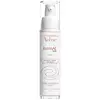What's inside
What's inside
 Key Ingredients
Key Ingredients

 Benefits
Benefits

 Concerns
Concerns

 Ingredients Side-by-side
Ingredients Side-by-side

Water
Skin ConditioningCaprylic/Capric Triglyceride
MaskingParaffinum Liquidum
EmollientGlyceryl Stearate
EmollientPEG-100 Stearate
Squalane
EmollientPropylene Glycol
HumectantMicrocrystalline Wax
Emulsion StabilisingPEG-40 Hydrogenated Castor Oil
EmulsifyingBHT
AntioxidantCaprylyl Glycol
EmollientCarbomer
Emulsion StabilisingDisodium EDTA
Oleoyl Dipeptide-15
Skin ConditioningOleoyl Tetrapeptide-31
AntioxidantCI 17200
Cosmetic ColorantRetinal
Skin ConditioningTocopheryl Glucoside
EmollientTriethanolamine
BufferingWater, Caprylic/Capric Triglyceride, Paraffinum Liquidum, Glyceryl Stearate, PEG-100 Stearate, Squalane, Propylene Glycol, Microcrystalline Wax, PEG-40 Hydrogenated Castor Oil, BHT, Caprylyl Glycol, Carbomer, Disodium EDTA, Oleoyl Dipeptide-15, Oleoyl Tetrapeptide-31, CI 17200, Retinal, Tocopheryl Glucoside, Triethanolamine
 Reviews
Reviews

Alternatives
Ingredients Explained
These ingredients are found in both products.
Ingredients higher up in an ingredient list are typically present in a larger amount.
This ingredient is an emollient, solvent, and texture enhancer. It is considered a skin-softener by helping the skin prevent moisture loss.
It helps thicken a product's formula and makes it easier to spread by dissolving clumping compounds.
Caprylic Triglyceride is made by combining glycerin with coconut oil, forming a clear liquid.
While there is an assumption Caprylic Triglyceride can clog pores due to it being derived from coconut oil, there is no research supporting this.
Learn more about Caprylic/Capric TriglycerideCarbomer is a polymer of acrylic acid. Its main role is to create a gel consistency.
A high amount of carbomer can cause pilling or balling up of products. Don't worry, most products contain 1% or less of carbomer.
Propylene Glycol is an odorless, colorless liquid. As a humectant, it helps skin retain moisture. It also aids in delivering active ingredients.
Another role of this ingredient is preventing a product from melting or freezing. Propylene glycol also adds antimicrobrial properties to a product, elongating product lifespan.
This ingredient is considered an organic alcohol and commonly added into both cosmetics and foods.
Those with sensitive skin or conditions may develop a rash when using this ingredient.
Learn more about Propylene GlycolTriethanolamine is an emulsifier and pH adjuster. It is created using ethylene oxide and ammonia. This gives Triethanolamine a nitrogen core and a similar scent to ammonia.
As an emulsifier, it prevents ingredients from separating and enhances texture by adding volume to a product.
PH adjusters are common in cosmetic products. The pH of a product can affect the effectiveness of other ingredients. A product with a high pH may also irritate the skin.
Learn more about TriethanolamineWater. It's the most common cosmetic ingredient of all. You'll usually see it at the top of ingredient lists, meaning that it makes up the largest part of the product.
So why is it so popular? Water most often acts as a solvent - this means that it helps dissolve other ingredients into the formulation.
You'll also recognize water as that liquid we all need to stay alive. If you see this, drink a glass of water. Stay hydrated!
Learn more about Water